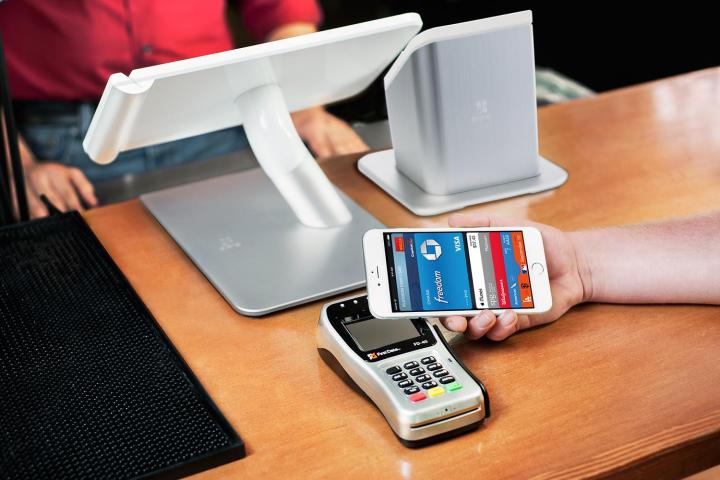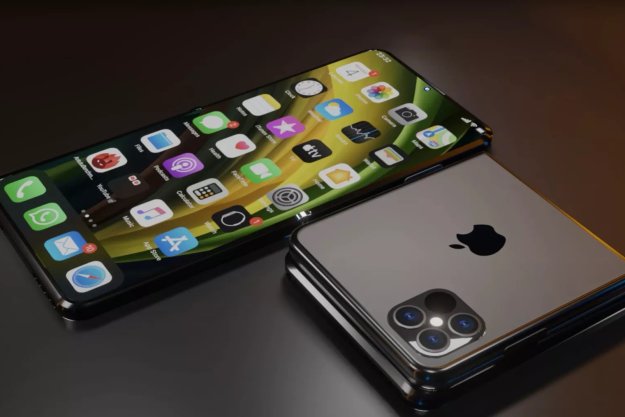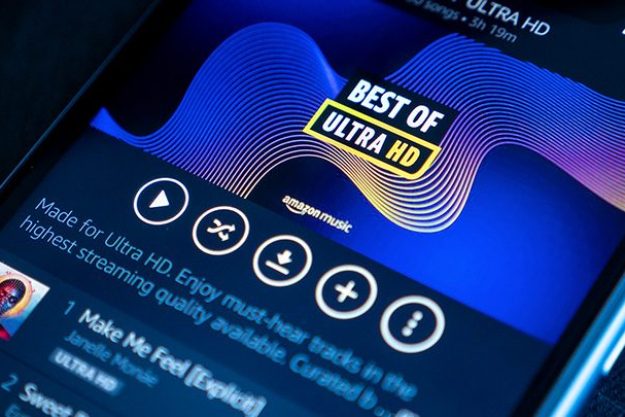
Now Apple will try to break the glass ceiling above mobile payments with Apple Pay, its own breed of payments based on Near Field Communication (NFC) technology. In the past, Apple has taken niche technologies and turned them into hugely successful products that appeal to mainstream users. We’ll soon find out if history will repeat itself; Apple Pay is set to launch by the end of this week.
In the meantime, we’ve put together a comprehensive guide with everything you need to know about Apple Pay and why mobile payments may be on the brink of going mainstream.
Setting up Apple Pay on your iPhone
Less than a week before Apple Pay goes live, 9to5Mac discovered screen shots of the Apple Pay setup in the iOS 8.1 beta. We now have a very clear idea of how to set up the system on the new iPhones.
- Download iOS 8.1
- Open the Passbook app
- Tap on Set up Apple Pay
- Add cards:
- Select card associated with iTunes gift card
- Confirm security code
- Scan new cards with iPhone’s camera
- Select card associated with iTunes gift card
- First card added is the primary card
Once you’ve added a credit card, you’ll be able to view your transactions, enable notifications for it, and have quick access to the bank’s app and phone number in case you have any problems. You can add up to eight different cards to the system.
Based on the leaked info, Apple Pay will automatically update when you get a new card, so you don’t have to enter the information all over again.
Another report from Bank Innovation hints that you may be able to switch between credit cards using Siri. For example, you could say, “Open my Bank of America credit card,” and the correct card would show up. The report claims that only Bank of America credit cards will work with Siri.
How Apple Pay works
Apple Pay should be as simple as a tap of your phone and the press of a finger. The tap-to-pay method already exists in American stores that have NFC-enabled terminals. Apps like Google Wallet, PayPal Here, and others have used tap-to-pay for years, but typically involve the added hassle of opening an app and entering your PIN.
It also works in Europe and other countries where Chip and PIN payments are more common. Cards with Chip and PIN (known as EMV — for Europay, MasterCard, and Visa — in the U.S) can simply be tapped against payment terminals in cafes, stores, and other locations to make small purchases. Now, iPhone users will be able to do the same, but without the annoyance of opening an app or entering any information.
Once you’ve set up Apple pay, you’re good to go. Here’s exactly how it works:
Step one: Walk into a store, select items, and head to cash register
Step two: Tap your iPhone to the NFC Point of Sale (POS) terminal.
- The NFC POS terminal connects to the Apple Pay app on your iPhone.
- The full credit card number is not stored in the phone, but shows up as a Device Account Number.
- The number combines with a secure transaction code.
Step three: Verify the payment with your fingerprint or a PIN you set up.
- The Secure Element chip in iPhone’s NFC hardware validates the transaction.
- The NFC POS terminal sees that you authorized the purchase.
- The merchant sends purchase info to the bank.
- The bank verifies the merchant, matches transaction data to your account/card info, and processes the payment.
Step four: Once the purchase is processed and approved, you get your receipt.
Leonard Speiser, the cofounder and President of Clover, a company that offers Point of Sale (POS) terminals and other forms of mobile payments, told Digital Trends that to succeed, Apple Pay must achieve two things: “Tap-to-pay has to be very fast and it can’t have a million steps.”
“The user experience is critical,” Speiser told us. “Apple has done a truly incredible job. It’s extremely fast and a magical experience.”
As an Apple Pay partner, Clover has had early access to Apple Pay. After much testing and working on improvements to how it works with Clover’s system, Speiser is very pleased with the service. He also told us about the other, less talked about aspect of Apple Pay: purchases made within apps.
“In places like restaurants and cafes, tapping to pay at a register just doesn’t make sense,” Speiser said. “Customers can use an app to pick items from the menu, order food, and pay with Apple Pay. There’s no need to type in your credentials – you simply place an order and pay. It will shave time off of visits to stores and restaurants and remove the bottleneck.”

In theory, you’d be able to open the app, order your coffee in advance, and pay with Apple Pay without ever having to wait for a server or stand in line. This is already possible at some places with Square Order and OpenTable. Anyone who’s used Uber will also be familiar with the process.
The only downside to this approach is that those who use Apple Pay could end up with a slew of apps installed on their phone. Luckily, as Mark Schulze — who’s in charge of business development at Clover — explained to us, since all the apps are using Apple Pay, you won’t have to enter your credentials into every app or create new accounts for each one. This also adds security.
“Apple has your info, which is encrypted and kept with your credit card companies – not the app developer, restaurant, or store. No one gets your credentials.”
The security behind the system
After the infamous iCloud hack, users are understandably skeptical about Apple’s ability to keep their credit cards secure. Since news of the scandal broke, Apple has been trying to convince users that Apple Pay features top-of-the-line security. In October, the company published a detailed document called “iOS Security,” in which the secure elements of Apple Pay are explained.
The first thing to note is that your credit card info and paying credentials are never stored on your iPhone. Secondly, retailers never receive your card details, so your account will stay safe, even if the store suffers from a massive security breach like Target and the Home Depot recently did.
Apple generates a special security code that’s used to authorize payments made using Apple Pay on your iPhone. Apple calls the code your specific Device Account Number. This process is known as tokenization. Essentially, Apple works with card providers like Visa or your bank to replace your sensitive data with random data that has the same structure and formatting. So your 16-digit credit card number gets stored in the bank or card provider’s extremely secure database, and then another 16-digit number that looks and acts like a credit card number is generated to verify the purchase.
Ironically, tokenization should actually make Apple Pay a more secure payment method than swiping your credit card. Every time you swipe your card, your actual account number and credentials are revealed to the retailer – That’s how identity theft happens. With Apple Pay, that information is kept safe. If anyone gets their hands on the token, it will be useless to them because they do not have access to your fingerprint or PIN, which is required to verify and process every Apple Pay purchase.

The card numbers associated with Apple Pay accounts are vaulted by Visa, MasterCard, and American Express, he said.
“Then, a unique token is created that’s not an actual credit card number. It keeps the info out of everyone’s hands except the people who already have it – the credit card companies.”
Recently, credit card providers like Visa announced that they will handle tokenization themselves, taking the trouble of the process right out of Apple’s hands. Essentially, if you trust Visa, MasterCard, and American Express with your money, there’s no reason not to trust Apple Pay.
Where Apple Pay will work
Apple says it has partnerships with 220,000 stores and Apple Pay will be available in each and every one. On its website, the company lists its own store, Bloomingdales, Macy’s, Duane Reade, McDonald’s, Sephora, Petco, Panera Bread, Staples, Nike, Walgreens, Subway, Whole Foods, and more as participating stores.
Chances are also good that if you see the NFC mobile payments symbol on a cash register, Apple Pay will work at that store, too. In recent weeks, we’ve seen businesses gearing up for the payment system’s launch. Small businesses that use POS terminals from the likes of Square and Clover will also soon accept Apple Pay.
Square told us that although it can’t confirm any details, it will soon accept Apple Pay. “We are working on a contactless solution and we plan to enable our Register sellers to accept Apple Pay,” Square told Digital Trends via email.
Clover’s Speiser told us that all of the company’s POS terminals can be easily updated with a ~$100 USB attachment that can accept NFC payments like those from Apple Pay. New Clover Stations will come with the attachment.
Those of you who like shopping online will be glad to hear that Apple Pay will work in a bunch of apps. Apple Store, Target, Uber, Groupon, Instacart, OpenTable, Panera Bread, Sephora, Starbucks, Tickets.com, and other apps will all work with the new system.
Mobile payments will go mainstream
There’s no denying that the world of payments in the U.S. will soon change. It has to. Europe is already light-years ahead just by offering the option of mobile payments and tap-to-pay methods with normal credit cards. Even so, our writers in the U.K. tell us Chip and PIN and mobile payments are still uncommon. Some countries in Asia are a few steps ahead of Europe in that regard.
Now lawmakers in the U.S. are starting to take notice. Starting in the fall of 2015, any merchants that do not support EMV cards with Chip and PIN security will be liable for the fraudulent use of counterfeit, lost, and stolen cards. As such, U.S. merchants are expected to update all payment terminals before the new law kicks in.
At this point in time, only 14 percent of merchants in the U.S. support EMV cards at their terminals. Every terminal that does not accept the tap-to-pay method will need an upgrade. In other words, by 2015, nearly every single business will accept Apple Pay. Apple’s timing really could not be better.
Clover’s Speiser foresees a revolution in the payment industry. “There’s always going to be a ramp-up time, but yes – Apple Pay will help make mobile payments mainstream,” he said. “Apple will set the gold standard of the customer experience. Tap-to-pay will and should be the standard. You’re going to expect it.”
The real winner here is the consumer, Speiser told us. “We haven’t seen any real change in the retail experience for years. This will change the payment flow forever.”
Speiser believes that the tipping point will come within 12 to 18 months, and after that point, mobile payments and EMV tap-to-pay transactions will go mainstream very quickly.
“When it comes to changing consumer behavior, Apple is consistently a leader.”
“When it comes to changing consumer behavior, Apple is consistently a leader,” he wrote in an email. “Apple helped make digital music, the smartphone, and the tablet part of all of our lives, so it is not hard to imagine that Apple Pay could be a (or the) catalyst that triggers mobile payments going mainstream.”
Apple Pay and mobile payments in general have a steep climb before they go mainstream, though. According to a Walker Sands’ 2014 Future of Retail study, only 8 percent of customers are currently using apps like Passbook to make payments and track funds.
These numbers are projected to rise once Apple Pay debuts — but it may take a long while before mobile payments hit the big time. Despite Apple’s work in this space, the revolution has only just begun.
Editors' Recommendations
- What is NFC? How it works and what you can do with it
- Everything you need to know about the massive Apple App Store outage
- The DOJ has sued Apple over the iPhone. Here’s what it means for you
- What is an eSIM? Here’s everything you need to know
- Everything you need to know about the massive AT&T outage


